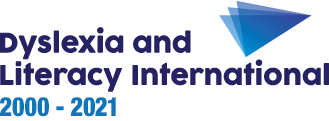Pages in Section 1
Dyslexia may coincide, or be confused, with other deficits.
Professor Margaret Snowling of the Centre for Reading and Language, University of York, UK, says:
‘Dyslexia is not a single category but a disorder found within a spectrum of deficits. These deficits may interact with each other in a complicated way.
Many experts are now starting to think in terms of risk factors rather than single ‘causes’. There is a continuum of risk factors which then may accumulate and lead to a threshold, which is then identifiable.
Thinking in these terms then, dyslexia may sometimes be found in association with other learning disabilities, or risk factors, but which can in some cases be separated. This will help indicate the best intervention.’
Specific Language Impairment (SLI), or dysphasia
This is a specific difficulty in acquiring oral language.
Its origin is found in neurological development.
There is a significant delay in acquiring language in preschool years, poor vocabulary, and difficulties with grammar.
The condition is often accompanied by difficulties with reading and spelling.
For more information on this condition, you may visit many websites, amongst others:
Afasic, an organization based in the UK, which provides information and training for parents and professionals, and produces a range of publications
The webpage on language disorders (aphasia and dysphasia) of the US
Learning Disabilities Association (LDA)
Attention Deficit/Hyperactivity Disorder (ADHD)
Its origin is found in neurological development.
There is a disruption of the ‘higher executive’ cerebral functions which control behaviour.
Up to 40 % of children with ADHD have reading impairments.
(NOTE: This is not saying that 40% of children with dyslexia have ADHD.)
For more information on this condition, you may visit many websites, amongst others:
Webpages on ADHD from the HI2U website, a UK site centered around ADHD, Asperger’s Syndrome, Dyslexia and similar neurological differences, as well as other types of hidden impairment
Webpages and free downloadable booklet on ADHD from the US
National Institute of Mental Health (NIMH)
Difficulties with mathematics
Research shows that about 60 per cent of children with dyslexia are likely to have difficulties with basic maths although their difficulties are often left behind when they rely on more intuitive approaches.
They are often very good at geometry and in learning that requires spatial representations, since they often display higher spatial skills than children without dyslexia.
On the other hand the following aspects of elementary mathematics are barriers to learning for children with dyslexia:
– memorizing the basic elements of addition, subtraction and multiplication tables
– retaining the elements of long-division
– understanding for example the abstract concepts of the words ‘reduction’, ‘difference’ and ‘less,’ in relation to ‘subtraction’, or ‘find the total’ in relation to ‘addition’
– similar-looking mathematical signs: for addition and multiplication, subtraction and division, and for ‘smaller than’ and ‘bigger than’.
For more information on this topic, you may visit:
The website of Steve Chinn, international expert on Dyslexia and Dyscalculia, and member of Dyslexia International’sConsultancy e-Team
The webpage presenting the book The mathematical brain by Brian Butterworth, Professor of Cognitive Neuropsychology at University College, London, UK, and founding editor of the academic journal ‘Mathematical Cognition’
Poor physical coordination
There are several terms for this condition. The most common is ‘dyspraxia’. Many people would call it being clumsy.
It is a developmental condition which affects co-ordination, balance, fine motor skills, language, thought and perception.


